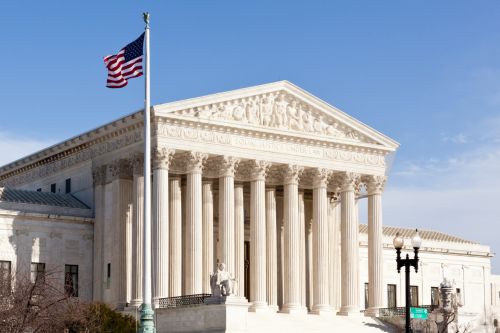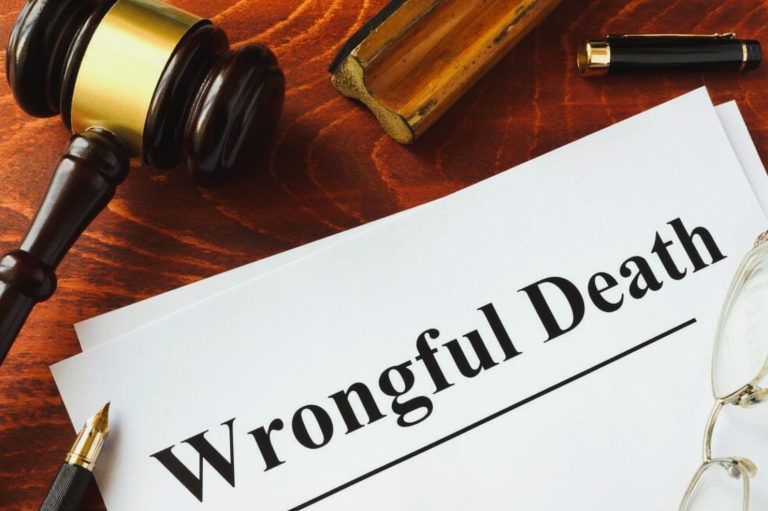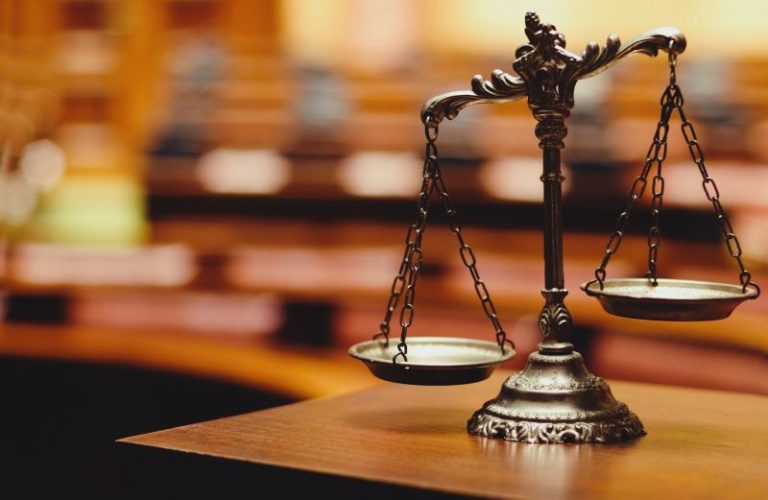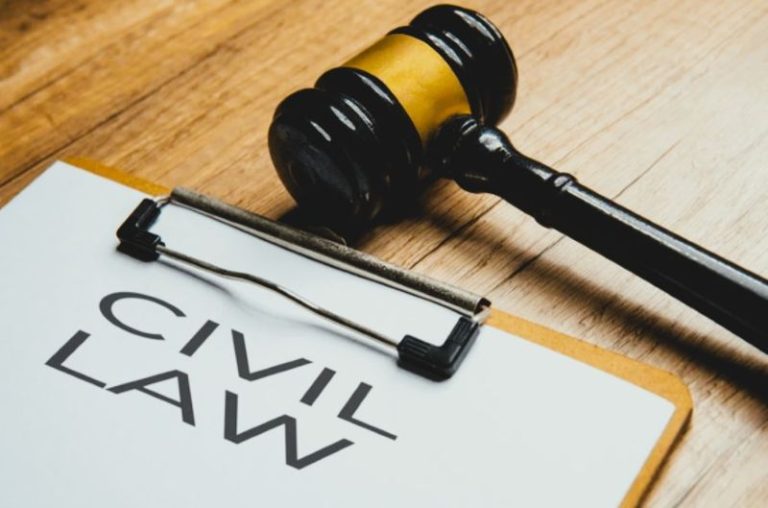

The struggle against authoritarianism is not confined to rallies, hashtags, or elections. It is also waged quietly in motions, filings, and injunctions.

By Matthew A. McIntosh
Public Historian
Brewminate
Using Law Against Authoritarianism
When President Donald Trump invokes “law and order,” he means obedience, not justice. Yet it is precisely within the framework of law that some of the fiercest resistance to his authoritarian ambitions is now forming. Former prosecutors, civil servants, and pro bono legal groups have mobilized to defend the rule of law from the inside, representing officials purged for political reasons, challenging blocked federal funds, and contesting the administration’s assaults on institutional independence.
This emerging legal front isn’t a protest march; it’s a counteroffensive fought through filings, injunctions, and constitutional claims. These efforts form an organized “legal resistance,” guided by veterans of past ethics and oversight battles who see in Trump’s behavior a direct threat to democratic governance. The fight to preserve American democracy has shifted decisively into courtrooms, one motion at a time.
Authoritarian Ambitions and the Hollow Rhetoric of “Law and Order”
Trump’s political power has always depended on contradiction. He brands himself as the champion of “law and order,” but what he demands is loyalty to himself, not fidelity to law. His version of order exalts personal dominance over due process and party allegiance over institutional restraint. During his presidency and again after returning to office, Trump’s allies have sought to purge civil servants, weaken agency independence, and bend enforcement priorities to political ends, a pattern visible in autocratic movements around the world.
That phrase “law and order,” long used by Republicans to project moral clarity, has become a rhetorical shield for lawlessness from above. Within the Department of Justice, veteran attorneys have reportedly faced pressure to resign or sign off on legally dubious directives. Civil service protection boards, watchdog inspectors general, and internal ethics offices, the quiet architecture of democratic accountability, have all come under renewed attack. Trump’s advisers frame these moves as necessary to “restore control” over a “deep state,” but in practice, they erode the rule of law that “law and order” is meant to uphold.
This is not accidental. It reflects the authoritarian logic that power must be unified under a single will. Political scientist Ruth Ben-Ghiat has written that modern autocrats often begin their ascent by weaponizing legality, turning courts, police, and bureaucracies into extensions of their personal authority. Trump’s campaign to expand executive control over federal employment, to bypass congressional oversight through emergency declarations, and to direct law enforcement toward perceived enemies follows this familiar playbook. The claim to be restoring law becomes a way of dismantling it.
The Strategy of Legal Resistance
Yet the same legal system Trump seeks to dominate is being used to hold him to account. Across the country, a growing coalition of lawyers, nonprofits, and state officials has recognized that the most effective defense against authoritarianism may come through the very mechanisms Trump tries to corrupt. Networks of attorneys, many veterans of earlier rule-of-law battles, are coordinating lawsuits to challenge unlawful firings, forced loyalty oaths, and executive power grabs.
Some of these groups are newly formed; others trace their roots to earlier fights against corruption and voter suppression. Former White House ethics counsel Norm Eisen has helped organize a “legal resistance” uniting public-interest firms, watchdog organizations, and whistleblower advocates. Together, they have filed suits challenging executive actions that undermine constitutional norms, sought injunctions against retaliatory purges, and pursued Freedom of Information Act requests to expose politicized decision-making.
Their strategy is both defensive and declarative. Each lawsuit asserts not just a claim, but a principle: that public service is owed to the Constitution, not to any one man. Through the steady rhythm of litigation, they force the courts, and by extension, the public, to confront the administration’s abuses in the language of law itself. Every ruling, even a narrow one, becomes part of a larger civic archive documenting what a government without constraint can attempt.
Assessing Early Successes, Limits, and Challenges
The legal resistance has already begun to yield results, even as it faces formidable headwinds. In dozens of cases, judges have temporarily halted or struck down Trump administration actions, from politically motivated firings to attempts at defunding climate programs and civil rights enforcement. These victories have slowed key elements of the president’s agenda, exposing the fragility of executive overreach when tested against constitutional checks.
In one widely cited case, a coalition of attorneys representing career officials successfully challenged the administration’s use of loyalty oaths as a condition for continued federal employment, arguing that the policy violated the First Amendment and the Civil Service Reform Act. A federal judge agreed, issuing a nationwide injunction that prevented thousands of potential dismissals. In another, environmental groups blocked an emergency order diverting funds from clean-energy programs to political allies’ infrastructure projects. These cases have set early precedents that may define the boundaries of executive authority for years to come.
But the path is steep. The conservative dominance of the Supreme Court poses a profound obstacle. Some rulings from lower courts have already been reversed or curtailed on technical grounds, and the administration has accelerated efforts to reshape the judiciary further. The sheer volume of litigation, hundreds of cases nationwide, strains the limited capacity of public-interest groups and state attorneys general. Many advocates worry about “resistance fatigue”: the risk that endless legal battles will normalize authoritarian tactics by treating them as just another policy dispute.
There is also the danger of retaliation. Trump and his allies have moved to investigate or publicly name lawyers involved in prominent suits, a tactic reminiscent of historical efforts to intimidate dissenters under the guise of transparency. Yet this pressure has only deepened resolve among many in the movement. For them, every attack confirms the necessity of the work.
Broader Implications: Democracy, Institutions, and Civic Power
The significance of this legal counteroffensive extends beyond any single courtroom. It represents a crucial test of whether American institutions can still check the ambitions of an authoritarian leader through their own procedures. History suggests that democracies rarely fall in a single stroke; they erode through a gradual habituation to illegality, when citizens cease to believe that the law can protect them. The current wave of litigation seeks to resist that erosion by proving the opposite: that law remains a living defense of civic equality and accountability.
These efforts also highlight a broader civic awakening. Grassroots organizations, professional associations, and watchdog media outlets have joined forces with lawyers to document abuses, support plaintiffs, and sustain public pressure. Litigation has become not only a legal mechanism but a civic education, reminding Americans that democracy depends as much on participation as on precedent. This “distributed defense” reflects a growing recognition that the rule of law must be actively tended, not simply inherited.
Still, the question remains whether the courts alone can preserve democratic legitimacy if the executive continues to defy or manipulate their rulings. Trump’s defiant posture toward judicial oversight (dismissing judges as partisan actors, threatening to ignore adverse decisions) underscores the fragility of this moment. The law can slow authoritarianism, but it cannot by itself restore the civic virtue that makes law meaningful.
Outlook and Next Fronts
The next phase of resistance will test both endurance and imagination. Legal coalitions are already expanding beyond traditional constitutional arguments into new terrain (administrative procedure, labor rights, environmental protections, and even contract law) to create overlapping layers of accountability. These suits are meant not only to restrain power but to expose its machinery, forcing discovery, testimony, and documents into the public record where they cannot easily be buried. Several firms are now developing coordinated strategies to challenge executive orders pre-emptively, before they take full effect, rather than waiting for individual harms to accumulate.
State governments, too, have emerged as a counterweight. Attorneys general from California, New York, Michigan, and other states are pooling resources to file multi-state lawsuits against federal rollbacks, echoing the coordination once seen during the first Trump term. Legal scholars describe this as a new model of “federalist defense,” using the autonomy of states as a constitutional shield against centralizing power. Meanwhile, civic groups are training a new generation of lawyers fluent in both litigation and media strategy, recognizing that the court of public opinion can reinforce the legitimacy of court decisions.
These developments hint at a long game. As one lawyer said, “We’re not trying to win one case. We’re trying to make the law remember what it’s for.” The goal is less to defeat Trump outright than to preserve the institutional memory that distinguishes a democracy from an autocracy, to ensure that, even in the face of executive defiance, the habits of legality endure.
Conclusion
The struggle against authoritarianism is not confined to rallies, hashtags, or elections. It is also waged quietly in motions, filings, and injunctions, in the disciplined insistence that rules must still matter even when rulers do not. Trump’s vision of “law and order” is one of subservience; his opponents’ vision is one of principle. The lawyers, advocates, and public servants now taking him to court are not merely resisting a president. They are asserting that democracy itself possesses a constitutional immune system: fragile, imperfect, but still functioning when activated.
Whether that system can withstand the strain depends on more than verdicts. It depends on the willingness of ordinary citizens to stand behind those who defend it, to see in every case not only a legal contest but a moral one. The resistance unfolding in America’s courts is, at its heart, a declaration that the law belongs to the people, and that no leader, however powerful, can rewrite that truth without our consent.
Originally published by Brewminate, 10.17.2025, under the terms of a Creative Commons Attribution-NonCommercial-NoDerivatives 4.0 International license.


